Lakshadweep: A Tropical Haven Mapped by AI
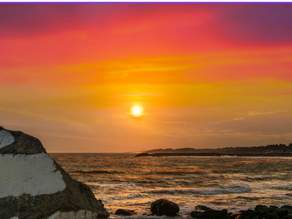
Imagine an area where azure waters kiss pristine sandy seashores, where colourful coral reefs residence an array of marine lifestyles, and wherein the tranquility of the ocean is matched simplest through the warm temperature of its human beings. Welcome to Lakshadweep, Lakshadweep A tropical archipelago inside the Indian Ocean that captivates the heart and soul of each tourist. In this blog , we’re going to take you on a adventure through the lovely islands of Lakshadweep. From island hopping to water sports activities to basking in the splendor of Kadmat seaside, let’s discover this tropical paradise with the help of AI, and discover what makes Lakshadweep a ought to-visit destination. Lakshadweep Island Hopping Kavaratti: The Capital Island Start your adventure in Kavaratti, the capital of Lakshadweep. The island offers a picturesque setting with its clear lagoons and beautiful white sandy beaches. Visit the Marine Museum to study the island’s rich marine existence and biodiversity. Kavaratti: The capital of Lakshadweep Agatti: A Water Sports Wonderland Agatti: Water Sports Hub Agatti is an adventurer’s dream come authentic. Dive into the clear waters for an unforgettable snorkeling or scuba diving revel in, or strive kayaking, windsurfing, and jet snowboarding. Agatti’s vibrant coral reefs and marine life aren’t to be missed. Kadmat: A Beach Paradise Kadmat Beach Kadmat is understood for its lengthy, sandy beaches and beautiful coral reefs. The island is a really perfect break out for those in search of peace and solitude. Enjoy beach activities like sunbathing, swimming, and beach volleyball, or really relax in a hammock with a terrific ebook. Lakshwadeep Islands can be discovered more by going throught this. AI Insights: Travel Recommendations AI can offer personalized travel pointers primarily based in your pursuits and choices. Whether you’re seeking journey, rest, or cultural experiences, AI will let you plan the suitable Lakshadweep getaway. Conclusion Lakshadweep is a tropical paradise that offers something for anybody. Whether you are in search of adventure in Agatti, rest in Kadmat, or cultural studies in Kavaratti, the archipelago’s beautiful splendor and heat hospitality will go away you with unforgettable recollections. Let AI guide your journey and help you create a customised Lakshadweep enjoy. So pack your luggage and get ready to discover this enchanting haven of sun, sand, and sea! Thanks for tuning in, and remember, the pleasant adventures take place off the overwhelmed route! ????✈️????
Lakshadweep Island – An All-Age Vacation Guide for Families
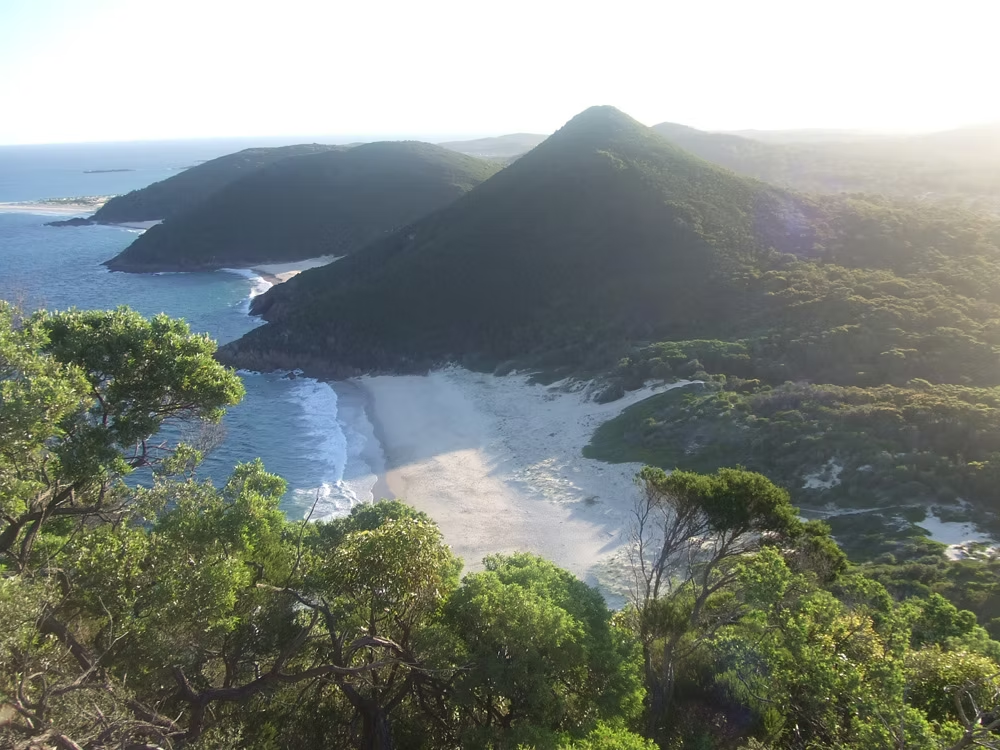
Discover the allure of Lakshadweep Island as the ultimate family getaway destination! Dive into turquoise waters, lounge on pristine beaches, and immerse in cultural delights. From beach bliss to marine marvels and enriching cultural experiences, this guide unveils why Lakshadweep is perfect for all-age vacations. Plan your tropical adventure today! Lakshadweep Islands Welcome to the jewel of the Indian Ocean, where turquoise waters meet pristine beaches and cultural wonders await at every turn. Lakshadweep, with its serene landscapes and vibrant marine life, is not just a destination for the adventurous souls but also a perfect spot for families seeking a memorable vacation. In this guide, we’ll take you through a journey of discovery, showcasing why Lakshadweep is ideal for an all-age vacation packed with fun activities and cultural experiences. Why Choose Lakshadweep for a Family Vacation? Picture this: You and your family stepping onto the soft sands of Agatti Beach, the gentle waves inviting you for a swim while the kids build sandcastles. Lakshadweep offers a safe and tranquil environment perfect for families. The island’s secluded beaches ensure privacy, while its crystal-clear waters make swimming and snorkeling a delightful experience for all ages. A family on a beach Lakshadweep’s All-Age Activities Beach Bliss for Everyone The beaches of Lakshadweep are nothing short of paradise. Bangaram, known for its serene ambiance and swaying palm trees, is a favorite spot for families. Imagine spending a day here, soaking in the sun while the kids splash in the shallow waters, collecting seashells as souvenirs. Sunset For a more adventurous experience, head to Kadmat Island. Its untouched beauty and calm waters make it an ideal spot for snorkeling. Imagine snorkeling alongside your kids, marveling at the colorful fish and vibrant coral reefs beneath the surface. Marine Marvels to Explore Lakshadweep’s underwater world is a treasure trove of marine life. Take your family on a snorkeling or diving expedition to witness the wonders beneath the waves. Spotting sea turtles gliding gracefully or encountering playful dolphins is a memory your family will cherish forever. Sea-Turtle Cultural Immersion for Enriching Experiences Beyond its natural beauty, Lakshadweep offers rich cultural experiences. Attend a traditional dance performance where the rhythms of the islands come alive. Let your kids participate in local handicraft workshops, learning the art of weaving or shell crafting from skilled artisans. Visit Minicoy Island to explore its historical lighthouse, offering panoramic views of the island’s coastline. The Archaeological Museum provides insights into Lakshadweep’s heritage, perfect for a family outing filled with learning and discovery. Shells Best Time to Visit Lakshadweep for Families Planning your family vacation to Lakshadweep? Consider visiting between October and May for the best weather and water conditions. This period offers calm seas, ideal for water activities, and comfortable temperatures for beach outings and exploration. Family-Friendly Accommodations and Dining Lakshadweep offers a range of family-friendly accommodations, from beach resorts to cozy guesthouses. These establishments often provide amenities like kids’ play areas, swimming pools, and babysitting services, ensuring a comfortable stay for families. When it comes to dining, indulge in local seafood delicacies like fresh fish curry or grilled lobster. Don’t miss out on traditional Malabar cuisine, with its flavorful spices and aromatic rice dishes. For the little ones, restaurants and resorts offer a variety of kid-friendly meals, ensuring everyone’s tastes are catered to. Tips for a Memorable Family Vacation in Lakshadweep Pack Wisely: Bring along sunscreen, hats, and beach essentials for protection from the sun. Stay Hydrated: Keep water bottles handy, especially during outdoor activities. Respect Local Customs: Familiarize yourself with local customs and dress modestly when visiting cultural sites. Safety First: Follow safety instructions during water sports and activities to ensure a safe experience for everyone. Conclusion: Create Unforgettable Memories in Lakshadweep Lakshadweep is more than just a vacation destination; it’s a gateway to creating lasting memories with your family. Whether it’s building sandcastles on the beach, snorkeling among vibrant marine life, or immersing yourselves in the island’s rich culture, Lakshadweep offers something for every member of your family. Plan your all-age vacation to this tropical paradise and embark on a journey filled with fun, adventure, and moments to treasure forever.
Andaman and Nicobar Islands: Beyond Beaches – Trekking Adventures

Explore the diverse landscapes of the Andaman and Nicobar Islands beyond the pristine beaches through thrilling trekking adventures. When we think of the Andaman and Nicobar Islands, pristine beaches often dominate our imagination. However, beyond the sun-kissed shores lies a realm of adventure waiting to be explored. From dense forests to picturesque waterfalls, there are countless hidden treasures to uncover. Take the road less travelled and be rewarded with breath-taking views and a sense of adventure. Andaman and Nicobar These hidden gems offer a sense of tranquility and serenity that is hard to find in more popular tourist destinations. Challenging Trekking Trails Await If you’re up for a challenge, the Andaman and Nicobar Islands offer a range of trekking trails that will put your skills to the test. Whether you’re an experienced hiker or a beginner looking for an adrenaline rush, there’s a trail for everyone. Trekking Trail The islands are home to diverse landscapes, including rugged mountains, dense forests, and rolling hills. Each trail offers a unique experience, with varying levels of difficulty. From steep ascents to rocky terrains, you’ll be tested both physically and mentally. But the effort is worth it, as you’ll be rewarded with stunning panoramic views and a sense of accomplishment. Let’s delve into the lesser-known trekking trails of these enchanting islands Andaman trek trails 1.) Ross and Smith Island Trek: The Ross and Smith Island Trek offers a unique experience, where travelers traverse a narrow strip of land connecting two picturesque islands, surrounded by turquoise waters. The gentle sway of coconut palms and the rhythmic lull of waves create a sensory feast like no other. Ross and Smith Island Trek, Credits: Experience Andaman 2.) Mount Harriet National Park Trek: For those seeking a more rugged terrain, the Mount Harriet National Park Trek provides an exhilarating journey through dense forests and rolling hills. The panoramic views of the surrounding islands from the summit leave trekkers breathless, both from the trek and the sheer beauty of nature. Mount Harriet National Park Trek, Credits: wildlifezones.com Mount Harriet National Park Trek, Credits: wildlifezones.com Nicobar Hiking Adventures 1.) Galathia to Kondul Island Trek: This trek takes you through the pristine forests and coastal landscapes of Nicobar. Starting from Galathia Beach, you’ll hike along rugged trails, cross streams, and witness stunning views of the ocean. The trail leads to Kondul Island, known for its secluded beaches and tranquil atmosphere. Island 2.) Campbell Bay National Park Trek: Explore the rich biodiversity of Nicobar at Campbell Bay National Park. The trek within the park offers encounters with diverse flora and fauna, including rare bird species like the Nicobar pigeon. The trail takes you through dense forests, freshwater streams, and scenic viewpoints, providing a memorable adventure in Nicobar’s wilderness. Campbell Bay Cultural Encounters Along the Trekking Routes Trekking in the Andaman and Nicobar Islands is not just about exploring nature, but also about immersing yourself in the local culture. Along the trekking routes, you’ll have the opportunity to interact with the indigenous tribes that call these islands home. Learn about their unique way of life, traditions, and customs. Engage in cultural exchanges and gain a deeper understanding of the rich heritage of the Andaman and Nicobar Islands. These encounters will not only enrich your trekking experience, but also leave a lasting impression. Tribes Essential Tips for a Memorable Trekking Experience To ensure a memorable trekking experience in the Andaman and Nicobar Islands, here are some essential tips to keep in mind: – Pack light and carry only the essentials. A heavy backpack can make your trek more challenging and tiring. – Wear comfortable and sturdy hiking shoes to protect your feet from rough terrains. – Stay hydrated throughout your trek by carrying an adequate amount of water and drinking regularly. – Apply sunscreen and wear a hat to protect yourself from the sun’s rays. – Follow the instructions of your guide and stay on designated trails to minimize your impact on the environment. ` By following these tips, you’ll be well-prepared for an unforgettable trekking adventure in the Andaman and Nicobar Islands. As we reluctantly say goodbye to the sun-kissed shores, it’s evident that the Andaman and Nicobar Islands are much more than just beaches; they’re a treasure trove of thrilling trekking adventures. From lush jungles to hidden coves, each path weaves a tale to be told. So gather your gear, tie your shoelaces, and dive into the wilderness. The call of adventure awaits, urging you to explore beyond the shoreline. Know more about this destination here.
Andaman and Nicobar Islands: Diving into Underwater Wonders
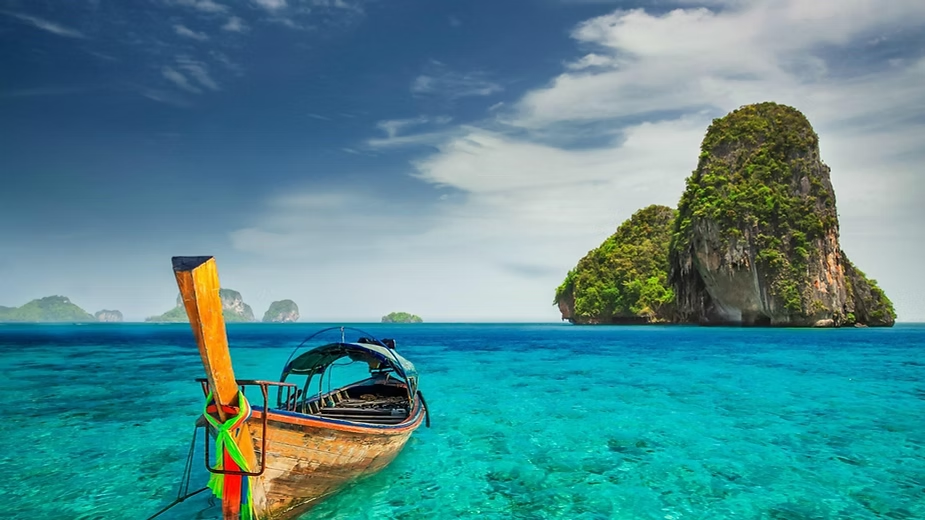
Discovering Andaman Scuba Diving The Andaman and Nicobar Islands are a paradise for scuba diving enthusiasts. With crystal-clear waters, diverse marine life, and stunning coral reefs, it offers an unforgettable experience for underwater explorers. Andaman and Nicobar Islands Andaman scuba diving opens up a whole new world beneath the waves. Dive into the depths and discover the vibrant colors and unique ecosystem that exists below the surface. With visibility of up to 40 meters, you’ll be able to see the coral reefs in all their glory. Whether you’re a beginner or an experienced diver, there are plenty of diving spots to choose from in the Andaman Islands. Havelock Island, Neil Island, and North Bay Island are some of the popular destinations known for their rich marine biodiversity. During your scuba diving adventure, you may come across majestic creatures like manta rays, sea turtles, and even dolphins. The underwater landscape is also home to a variety of coral species, including the rare black coral. Scuba Diving With professional dive operators and certified instructors, you can rest assured that your diving experience in Andaman will be safe and enjoyable. They provide all the necessary equipment and guidance to ensure a memorable underwater journey. So, pack your diving gear and get ready to plunge into the enchanting world of Andaman scuba diving. Click here to get your free personalized travel itinerary. Explore the underwater wonders and create memories that will last a lifetime. Exploring the Underwater Wonders Once you dive beneath the surface of the Andaman Sea, you’ll be amazed by the underwater wonders that await you. The coral reefs here are teeming with life, offering a kaleidoscope of colors and shapes. As you swim through the clear waters, you’ll encounter a variety of marine species. From tropical fish in all shapes and sizes to graceful sea turtles gliding through the currents, each dive brings a new adventure. Coral Reefs One of the highlights of exploring the underwater wonders is the chance to witness the unique symbiotic relationship between corals and other marine organisms. The coral reefs provide a habitat for countless species, from tiny shrimp to large groupers. For those interested in underwater photography, the Andaman Islands offer plenty of opportunities to capture the beauty of the marine world. From close-up shots of vibrant corals to wide-angle shots of schools of fish, there’s something for every photography enthusiast. Whether you’re snorkeling or scuba diving, take your time to explore the nooks and crannies of the coral reefs. You never know what hidden treasures you might discover, from hidden caves to colorful nudibranchs. Black Nudibranchs in Andman Sea With every dive, you’ll be mesmerized by the underwater wonders of the Andaman and Nicobar Islands. It’s a truly magical experience that will leave you in awe of the beauty and diversity of the marine ecosystem. Encountering Marine Biodiversity The Andaman and Nicobar Islands are known for their rich marine biodiversity. With over 500 species of corals and a wide variety of marine life, it’s a haven for nature enthusiasts and conservationists alike. During your underwater adventure, you’ll have the opportunity to encounter a myriad of marine species. From colorful reef fish like butterflyfish and angelfish to larger predators like barracudas and sharks, there’s always something fascinating to see. The coral reefs of the Andaman Islands are not only home to fish but also to a wide range of invertebrates. Keep an eye out for delicate sea fans, elegant sea anemones, and tiny crustaceans that call the reefs their home. Butterflyfish Angelfish One of the most unique encounters you can have in the Andaman Sea is swimming alongside majestic sea turtles. These gentle creatures can often be spotted gliding through the water, providing a truly unforgettable experience. Majestic Sea Turtle The marine biodiversity of the Andaman and Nicobar Islands is a testament to the importance of preserving and protecting this fragile ecosystem. By practicing responsible diving and supporting conservation efforts, we can ensure that future generations can also enjoy the wonders of these underwater habitats. Diving Tips and Safety Measures Before embarking on your scuba diving adventure in the Andaman and Nicobar Islands, it’s important to be well-prepared and aware of the necessary safety measures. First and foremost, make sure you are physically fit and in good health before diving. If you have any medical conditions, consult a doctor beforehand to ensure that diving is safe for you. Always dive with a certified instructor or dive master who is familiar with the local dive sites. They will guide you through the underwater world and ensure that you have a safe and enjoyable experience. Remember to do a thorough equipment check before each dive. Check your mask, fins, and other gear to make sure everything is in proper working order. When diving, always follow the buddy system and stay close to your dive partner. Finally, be mindful of your impact on the marine environment. Avoid touching or damaging coral reefs, and do not disturb or chase marine life. By being a responsible diver, you can help preserve the fragile ecosystem and contribute to its conservation. Preserving the Marine Ecosystem The Andaman and Nicobar Islands are blessed with a unique and fragile marine ecosystem. It’s our responsibility to protect and preserve this natural wonder for future generations to enjoy. One of the most important ways we can contribute to the preserve the marine ecosystem is by practicing responsible diving. This means respecting the underwater environment, following diving guidelines, and not disturbing or damaging marine life or coral reefs. Supporting local conservation efforts is another way to make a positive impact. Many organizations in the Andaman Islands are working tirelessly to protect the marine environment. By volunteering or donating to such organizations, you can help ensure the
Are Andaman and Nicobar Coral Islands?
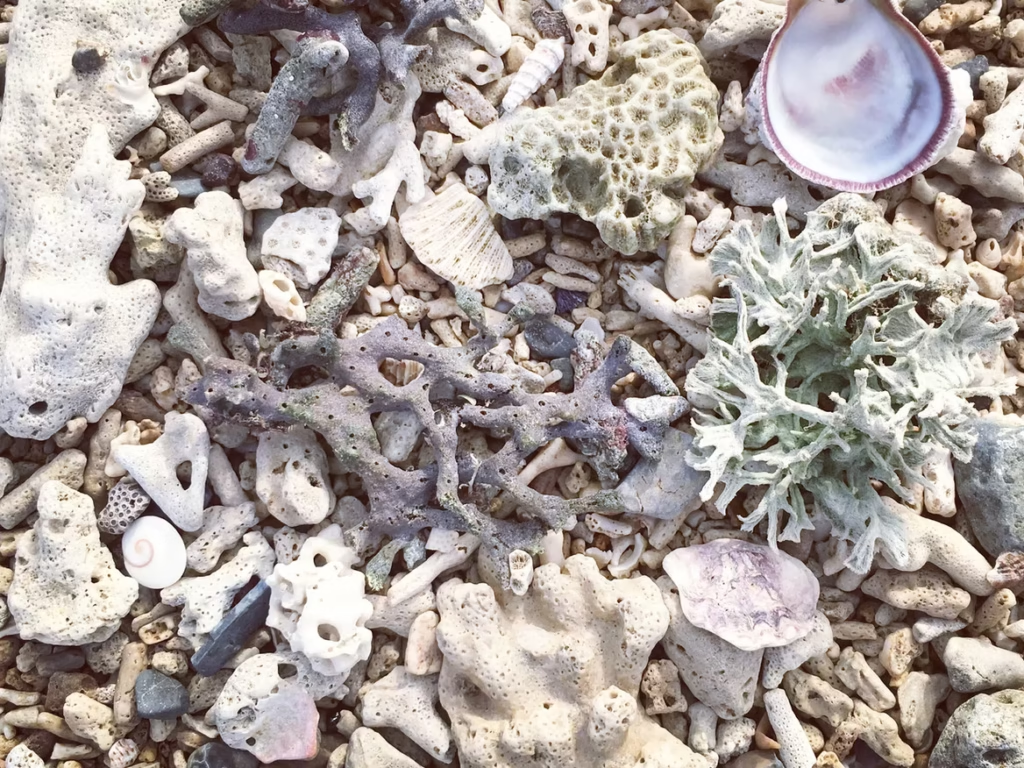
Travelers, scientists, and nature lovers have all been drawn to the mysterious allure of the Andaman and Nicobar Islands, which are tucked away in the Bay of Bengal’s embrace, adding them to the list of coral islands on the planet. Photo by Catrin Johnson on Unsplash What are coral islands? Coral islands, also known as atolls, are circular or horseshoe-shaped structures that can be found in warm tropical seas. They begin as volcanic islands, and when they settle or disintegrate, coral reefs build a protective barrier reef around them. When the original island vanishes, only the circular coral reef survives, becoming an atoll with a centre lagoon. These formations are well-known for their biodiversity and are attractive destinations for activities such as diving and tourism. The Maldives and the Great Barrier Reef are two examples. Andaman and Nicobar as coral islands Photo by Debal Das on Unsplash The Andaman and Nicobar Islands evoke pictures of gorgeous white sand beaches, waterways teaming with colorful marine life, and lush tropical forests at the mere mention of them. These islands are known for being coral islands and are distinguished by their breathtaking natural beauty. In essence, coral islands are land masses that have been created by or have had a significant impact from the accumulation and expansion of coral reefs. Coral reefs in the vicinity of the Andaman and Nicobar Islands are fascinating ecosystems that are essential to preserving marine biodiversity and guarding against erosion of coastal areas. Coral polyps, which are minuscule marine animals that form colonies, gradually build calcium carbonate skeletons that act as the foundation for coral reefs. These coral polyp colonies develop and link throughout time, building complex structures that provide as habitat and shelter for a wide variety of marine creatures. The Andaman and Nicobar Islands’ coral reefs are noteworthy not just for their breathtaking beauty, but also for the variety of species they are home to. Corals can flourish in the warm, clear seas surrounding these islands, creating a vibrant underwater tapestry of colors and patterns. The variety is astounding, ranging from hard corals that construct the strong foundation of the reefs to delicate soft corals that swing with the currents. The coral reefs on the islands are not only beautiful to look at, but they are also an essential part of the marine environment. Numerous fish species use them as nurseries, and they shelter and preserve young marine life. The food chain is subsequently maintained, which benefits larger predatory species and even human communities who depend on the waters for food. These sensitive ecosystems, despite being beautiful and important, are under threat from a variety of human activities. Coral reefs all across the world, including those near the Andaman and Nicobar Islands, face serious threats to their health and survival from pollution, overfishing, and ocean acidification brought on by climate change. To ensure the preservation of these vulnerable ecosystems for future generations, efforts are being made to increase awareness of the significance of protecting them and putting sustainable practices in place. The Andaman and Nicobar Islands are coral islands, demonstrating the spectacular beauty and critical role that coral reefs play in the environment. A magnificent world exists beneath the waves thanks to the colorful corals that characterize the underwater sceneries. It is our duty as stewards of the environment to protect these delicate ecosystems and make sure that the alluring coral reefs of the Andaman and Nicobar Islands survive so that future generations can admire and value them.
The Andaman & Nicobar Islands Railway Station

The Andaman and Nicobar Islands stand as a tribute to the astounding grandeur of nature, nestled in the Indian Ocean. In addition to capturing travelers’ attention, they also hide a hidden gem: the Andaman and Nicobar Islands Railway Station. The station serves as a portal to an exquisite world where the beat of trains is accompanied by the melody of the waves. Photo by paolo candelo on Unsplash A special mix of cutting-edge engineering and unmatched beauty can be found at the Andaman & Nicobar Islands Railway Station. The station is a gateway to an island paradise since it was carefully designed to blend in with its surroundings rather than stand out. A light breeze bringing the salty aroma of the ocean greets you as you step onto the platform. With wooden accents and thatched covering that honor the traditional handicraft of the islands, the station’s architecture reflects the aesthetics of the area. Platforms at the station look out into a stunning scene of coconut trees lining pristine white beaches and creating a lullaby of rustling leaves. Beyond there is the Andaman Sea, which has clear seas and coral gardens that serve as a sanctuary for aquatic life. Visitors frequently struggle between admiring the magnificent maritime painting and the allure of the station. The eco-aware culture of the Andaman & Nicobar Islands Railway Station is what actually sets it unique. The station’s environmental impact has been reduced with great attention by the architects. A self-sustaining energy cycle is ensured through the use of renewable energy sources, such as discretely integrated solar panels into the design of the station. Systems for collecting rainwater assist in maintaining the lush flora that surrounds the station and support the delicate environment of the islands. The station is an important component of the islands’ cultural fabric in addition to being an architectural marvel. The friendly and helpful station workers exemplify the spirit of the islands. They are more than simply conductors and attendants; they are storytellers who enlighten passengers about the culture and history of the islands. At the station, spontaneous folk concerts are frequently found, with local musicians filling the air with tunes that have reverberated throughout time. The Andaman and Nicobar Islands Railway Station serves as a poignant reminder of the strong bond between people and nature in a world dominated by technical developments. It serves as evidence for the idea that building may respect the natural world while opening doors to adventure and learning. Prepare to be charmed by this station’s appeal, humbled by its surroundings, and welcomed as a fellow traveler into the Andaman and Nicobar Islands as you set off on your adventure there.
Andaman and Nicobar Islands – Do you need a passport?

Navigating the Andaman and Nicobar Islands’ shores invites visitors to explore a region of stunning beauty and distinct charm. However, the topic of whether a passport is required to set foot on these heavenly shores frequently arises in the minds of travellers. For visitors from within India, the Andaman and Nicobar Islands give a cordial welcome that does not require a passport. As Indian union territories, these islands welcome Indian people with open arms, allowing them to enjoy their pristine beaches, lush landscapes, and teeming marine life without the requirement for an international travel document. Photo by Blake Guidry on Unsplash If one’s journey to these islands begins on foreign soil, the story takes a different path. For overseas travellers, the familiar companionship of a passport, coupled by the necessary visa arrangements, becomes a requirement. The Andaman and Nicobar Islands have their own distinct charm, but they also follow worldwide travel paperwork standards. Because the islands are an important part of India, domestic travellers can visit this haven without being hindered by passport requirements. Those embarking on a global voyage to these tropical havens, on the other hand, see the passport as the key to unlocking the treasure trove of their beauty. The Andaman and Nicobar Islands stand as a tribute to the range of human experiences in the delicate dance between travel prohibitions and the appeal of exploration. They welcome Indians with open arms and extend an invitation to international travellers armed with passports to learn their enthralling mysteries.
Andaman & Nicobar Islands
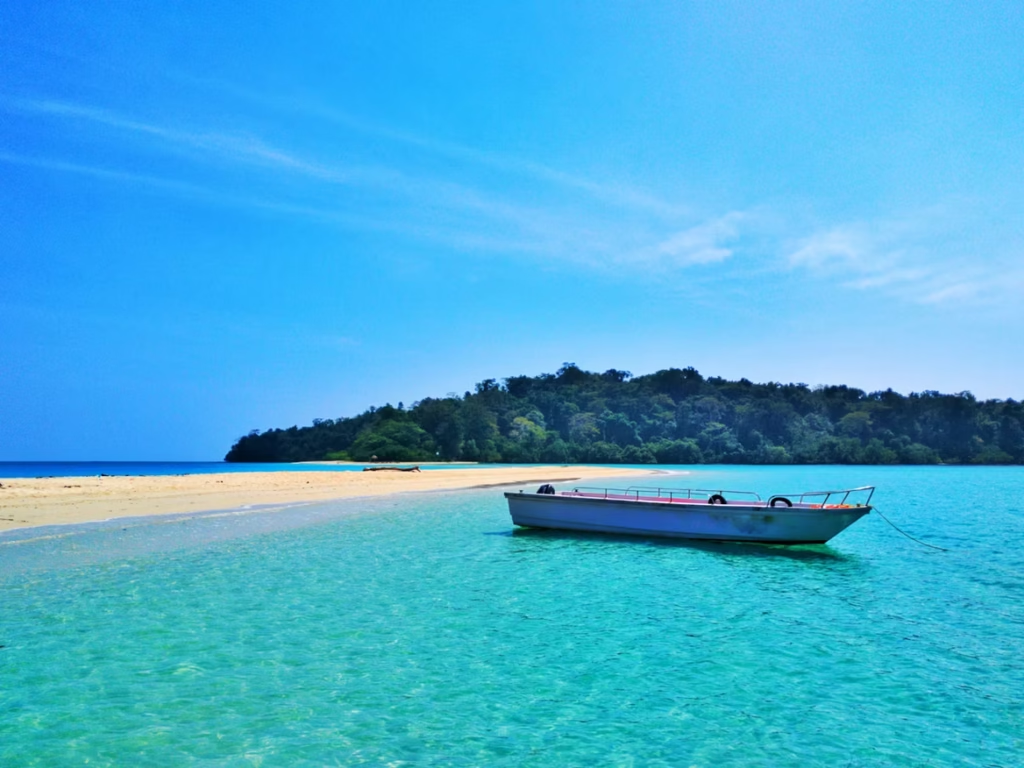
An Idyllic Paradise in the Bay of Bengal About History Population and people Climate Top 3 places to visit About The Andaman and Nicobar islands are one of the 8 union territories of India and are located in the Bay of Bengal, located between latitudes 6°N and 14°N and longitudes 92°E and 94°E. One can find white sand, pristine beaches lined with palm trees all over the islands. They give an opportunity for the perfect getaway to an abundance of quiet, tranquillity, and turquoise water. Andaman is a living example of what you mean when you refer to a “Tropical Paradise.” History The English East India Company’s fleet reached the Andaman Islands in 1789, and the British connected them administratively to the Nicobar Islands in 1872. The Andaman Islands are located on the historic trade route between India and Myanmar. In 1956, the two groups of islands were admitted as a union territory of the Indian Republic. The region has been known for its indigenous communities, which have steadfastly avoided considerable engagement with ethnic outsiders, for more than a century. The islands gained international prominence in 2004 after a sizable tsunami that had been caused by an earthquake in the Indian Ocean close to Indonesia badly destroyed them. 8,249 square km or 3,185 square miles. Population and People Photo by bionic__exe on Unsplash South Asian immigrants and their offspring make up the great bulk of the Andamans’ population. The majority of people speak Hindi or Bengali, but Tamil, Telugu, and Malayalam are also widely used. In the past, the Andamanese were small, isolated communities. Single outrigger canoes were used to harpoon or net turtles, dugongs, and fish. Major cultural change wasn’t possible until the middle of the 20th century due to the isolation of the Andamanese and their overall antagonism toward Westerners. Few native Andamanese remain alive today; the majority of these populations were wiped out by disease as a result of their contact with Europeans, Indians, and other foreigners. Early in the twenty-first century, the majority of the Nicobar Islands’ population was still made up of its native Nicobarese people (including the related Shompen). Both the Mon (also known as the Talaing) of Myanmar and the Malays of insular and peninsular Southeast Asia are likely their direct ancestors. The Austroasiatic language family includes the Mon-Khmer language group, which includes the Nicobarese languages. Some Nicobarese also speak Hindi and English. The Nicobar Islands are home to a sizable Tamil community in addition to its native inhabitants and other residents from the Indian mainland. As part of the Indian government’s initiative to advance the region’s agriculture, many arrived during the 1960s and 1970s. The people of the Andaman and Nicobar Islands are friendly and proud of their rich cultural history. Their welcoming atmosphere and open spirit provide visitors to the islands a sense of belonging. Festivals and events highlight the variety of their cultures while also encouraging unity among the diverse ethnic populations. The islanders have a deep connection to nature, living in harmony with the beautiful surroundings and enthusiastically sharing their knowledge of the indigenous flora and animals. Their fortitude in the face of adversity, especially natural calamities, is inspiring, and they continue to prosper with a strong sense of community. Interacting with the inhabitants exposes their true warmth and openness, leaving lasting recollections of the island’s allure. The inhabitants of the Andaman and Nicobar Islands are an essential part of the enthralling experience, making your trip genuinely enriching. Take advantage of the opportunity to engage with these friendly hosts and learn about the distinct character that defines this tropical sanctuary. Climate The best thing about these islands is that they are a year-round vacation spot with little variation in temperature and constant comfort. Between October and May is regarded as the ideal season to visit the Andaman and Nicobar Islands. A tropical paradise with a year-round warm and humid environment, the weather is sunny and comfortable, ideal for beach activities, snorkelling, and discovering beautiful coral reefs. The turquoise sea and moderate breeze provide an excellent environment for water sports and underwater experiences. During the monsoon season, which lasts from May to October, rain showers renew the lush green forests, creating a peaceful haven for nature enthusiasts but it is not a good time to visit because of the high tides, persistent rain, and strong winds. Regardless of the weather, immerse yourself in the islands’ rich cultural heritage by attending local events and traditional performances. Whether you prefer sun-kissed beaches or lush rainforests, the Andaman & Nicobar Islands provide a memorable and diverse experience, attracting travellers with their spectacular beauty and kind welcome. Because Andaman is a tropical island, it never experiences winter. Tourists can simply relax and take in the expansive view of the ocean in this comfortable, moderately humid climate that gives a good sea breeze. In the summer, the white dunes contrast with the clear blue sky and turquoise sea, which reflect blue tones. This makes for a beautiful vacation spot, not just for honeymooning couples but also for families with older members. It’s the ideal location to get a drink and relax on the shacks because it’s not too hot or humid. Andaman and Nicobar Airports How were Andaman and Nicobar Islands formed? Are Andaman and Nicobar Coral Islands? The Andaman and Nicobar Railways Do you need a passport to travel to Andaman and Nicobar Islands? Top 3 places to visit for your next trip to Andaman and Nicobar Islands Port Blair Photo by Sahil on Unsplash The Andaman and Nicobar Islands’ capital is Port Blair. Additionally, it serves as the sole notified town in the region as well as the administrative centre for the South Andaman district and the local administrative subdivision (tehsil) of the islands. The entry point is Port Blair, which has both air and marine connections to the rest of India. INS Jarawa, a
Andaman and Nicobar – Airports
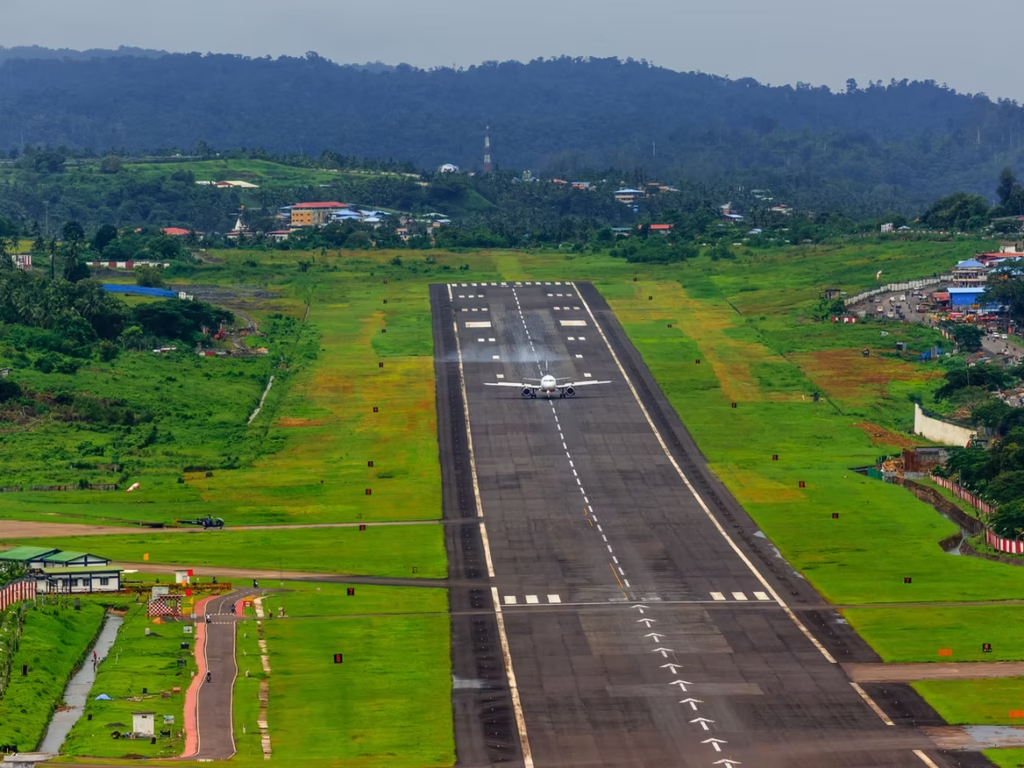
Here are a list of airports established in Andaman and Nicobar Islands. LOCATION NAME CATEGORY Port Blair Veer Savarkar International Airport International Airport Campbell Bay INS Baaz Military Car Nicobar Car Nicobar Air Force Base Military Diglipur INS Kohassa Military Photo by Lenstravelier on Unsplash Veer Savarkar International Airport The capital of the union territory of India’s Andaman and Nicobar Islands, Port Blair, is home to Veer Savarkar International Airport. The airport acts as a key hub for domestic and select international flights that connect the islands to other regions of India and surrounding nations. Due to its strategic location in the Bay of Bengal, it serves as a vital entry point for people and goods entering and exiting the region. The harmonious integration of modernization and cultural history is seen at Veer Savarkar International Airport. The airport, which bears the name of the visionary independence fighter Vinayak Damodar Savarkar, acts as a portal not just to a specific location but also to a deeply ingrained sense of history and patriotism. It’s more than simply a transit hub; it’s a location where tales of bravery and selflessness rub shoulders with the buzz of excited travelers. As you enter the airport, the architecture hints at a storied past. The architectural components work together to provide a classic feeling while accommodating modern tourist needs. The artful blending of traditional and modern elements in the airport’s design results in a space that is both warm and motivating. The Veer Savarkar International Airport is quite proud of its commitment to technical development. Modern infrastructure guarantees an effective travel experience, meeting the changing expectations of the contemporary traveler. The airport meets the needs of the digital age while still honoring its historical identity, offering seamless check-ins and cutting-edge security features. A smart selection of exhibitions and displays honor the man for whom the airport is named in addition to its utilitarian purposes. A trip to the airport provides an opportunity to learn about Veer Savarkar’s life and contributions, to feel a connection to the past, and to be motivated by his tenacious fight for justice and independence. Photo by Sathis Khanna on Unsplash INS Baaz INS Baaz Airport stands out as a protector of safety and the environment. Its strategic placement was carefully planned and ensures the country’s sovereignty at a key maritime intersection. The runway, which flows into the Bay of Bengal without interruption, represents the union of technological advancement with the vastness of nature. However, INS Baaz Airport is more than merely functional—it captures the spirit of the islands. The design appears to be an organic extension of the environment itself, and the breeze that rustles through its terminals brings echoes of the sea’s legacy. The employees here are more than just workers; they are watchmen for the security of the country. Their commitment to a cause bigger than themselves is echoed by the relentless waves touching the coastline. However, INS Baaz Airport offers a glimpse into island life in addition to serving a strategic purpose. Beyond safety, it gives visitors a glimpse of the islands’ unspoiled beauty, with lush surroundings and undeveloped beaches making a lasting impression on everyone who visits. The INS Baaz Airport is a guardian that is perfectly incorporated into the embrace of the islands, representing harmony between security and tranquillity. It ties together history, tactic, and the enduring fascination of the Andaman and Nicobar Islands with each departure and arrival. Car Nicobar Air Force Base The Car Nicobar Air Force Base Airport, located in the turquoise expanse of the Andaman Sea, is a combination of both strategic significance and natural grandeur. This airfield is more than simply a concrete runway; it represents the Andaman and Nicobar Islands’ ideal balance of security and peace. The Car Nicobar Air Force Base Airport’s position is not by chance; it is a thorough study of defense and proximity. Strategically positioned, it protects the nation’s interests in a critical region. The runway appears to extend indefinitely into the water, a symbol of the harmony between human ingenuity and the vastness of nature. However, this airport is more than just a military post; it embodies the essence of the islands. The lovely sea air that rustles through its hallways hints about the islands’ seafaring past. The building reflects this link, blending in with the surroundings. The servicemen stationed at Car Nicobar Air Force Base Airport are professional national security protectors. Their dedication echoes the waves that caress the island coastlines incessantly, a reflection of their dedication to a cause larger than themselves. In addition to its strategic importance, the airport provides passengers with a unique look into the allure of the islands. It also acts as a gateway to the pristine beauty of the Andaman and Nicobar Islands. The islands’ pristine beaches and verdant surroundings create an indelible impression on those who visit, attesting to their ageless appeal. With each landing and takeoff, history, strategy, and the compelling appeal of the Andaman & Nicobar Islands are intertwined.
Top Attractions to Include in Your Goa Travel Itinerary

Goa’s allure as a popular tourist destination lies in its perfect amalgamation of stunning beaches, cultural heritage, adventurous water sports, and vibrant nightlife. It caters to the preferences of every traveler, be it a beach lover, an adventure seeker, a history enthusiast, or a party animal. With its welcoming locals, delectable cuisine, and a relaxed tropical vibe, Goa promises an unforgettable experience that will keep you longing for more. So, pack your bags, soak up the sun, and let Goa cast its spell on you. While spontaneity has its charm, planning a comprehensive travel itinerary is essential for a well-organized and enjoyable trip. It helps you optimize your time, secure reservations, manage your budget effectively, discover hidden gems, and prioritize your safety. So, whether you’re embarking on a solo adventure or traveling with companions, take the time to plan a detailed itinerary and watch as your travel experience becomes smoother, more fulfilling, and unforgettable. Goa, the pearl of the Indian coastline, is a traveler’s paradise that offers a diverse range of attractions. From its pristine beaches and colonial heritage to its vibrant markets and mouthwatering cuisine, Goa has something for every type of traveler. In this comprehensive travel itinerary, we will highlight the top attractions that should be included in your visit to Goa. Get ready to immerse yourself in the breathtaking beaches, explore the historical sites, savor the local flavors, and experience the unique charm of this tropical destination. Credit: Unsplash Beaches and Waterfront Delights Goa, the coastal haven of India, is synonymous with stunning beaches, thrilling water sports, and enchanting cruises. Every year, travelers flock to this tropical paradise to indulge in the perfect blend of relaxation and adventure. In this blog post, we will provide an introduction to renowned beaches in Goa, an overview of popular water sports available, and essential tips for selecting reliable cruise operators to maximize your experience. Here are few places and things you will love to visit or do in Goa. Credit: Unsplash Calangute Beach Known as the “Queen of Beaches,” Calangute Beach is a popular hotspot that offers a vibrant atmosphere, water sports, and beachside shacks serving lip-smacking seafood. This expansive stretch of golden sand attracts both domestic and international tourists. Baga Beach Adjacent to Calangute Beach, Baga Beach is famous for its energetic nightlife and beach parties. It offers a lively ambiance, water sports activities, and a wide array of beachside restaurants and bars. Anjuna Beach Anjuna Beach captivates visitors with its laid-back hippie vibes and stunning natural beauty. It is renowned for its Wednesday Flea Market, where you can find unique handicrafts, clothes, and souvenirs. Anjuna is also known for hosting full-moon beach parties. Parasailing Soar high above the azure waters of Goa and enjoy breath taking views of the coastline during a parasailing adventure. The experience of being lifted by a parachute while being towed by a speedboat is exhilarating and unforgettable. Snorkeling For those who prefer to stay closer to the water’s surface, snorkeling is an excellent option. Put on your snorkel mask and fins, and dive into the sea to discover colorful fish, coral gardens, and other fascinating marine species. Credit: Unsplash Historical and Cultural Marvels Goa’s historical forts, magnificent temples, majestic churches, and UNESCO World Heritage sites offer a glimpse into its rich cultural and architectural legacy. Exploring the iconic forts of Aguada and Chapora allows you to delve into the region’s historical defenses, while visiting prominent temples and churches provides a deeper understanding of Goa’s spiritual heritage. Lastly, wandering through the Latin Quarter and Fontainhas transports you back in time, immersing you in the colonial charm of Goa. Discover these historical gems and let Goa’s vibrant past unfold before your eyes, creating memories that will last a lifetime. Here are few places for you to visit in Goa. Credit: Unsplash Aguada Fort Aguada Fort, a magnificent 17th-century Portuguese fort, stands tall on the Sinquerim Beach in North Goa. Built as a defense against Dutch and Maratha invasions, the fort offers panoramic views of the Arabian Sea. Explore its massive walls, visit the lighthouse, and step into history as you admire the impressive architecture and soak in the breathtaking vistas. Chapora Fort Perched atop a hill overlooking the Chapora River, Chapora Fort holds a prominent place in Goa’s history and pop culture. Dating back to the 17th century, the fort offers mesmerizing views of the coastline. Immortalized in the Bollywood movie “Dil Chahta Hai,” the fort’s ruins and panoramic setting make it a favorite spot for sunset enthusiasts and history buffs. Basilica of Bom A UNESCO World Heritage site, the Basilica of Bom Jesus in Old Goa is a prominent Christian pilgrimage site. The church holds the mortal remains of St. Francis Xavier, a revered saint. Marvel at the Baroque architecture, intricate woodwork, and the awe-inspiring artistry inside the church. The Basilica is an emblem of Goa’s colonial legacy and an architectural masterpiece. Se Cathedral Adjacent to the Basilica of Bom Jesus, the Se Cathedral is the largest church in Asia dedicated to St. Catherine. This 16th-century church showcases Portuguese-Gothic architecture at its finest. Admire the ornate altars, exquisite artwork, and the magnificent Golden Bell, known for its rich tonal quality. The Se Cathedral is a symbol of Goa’s religious heritage and grandeur. Latin Quarter The Latin Quarter in Panaji, Goa’s capital city, is a vibrant neighborhood that takes you back in time to the Portuguese colonial era. The narrow winding streets, colorful houses, and architectural influences create an old-world charm. Stroll through the Fontainhas area, witness the vibrant colors of the buildings, and soak in the unique ambiance that earned it the title of a UNESCO World Heritage site. Fontainhas Fontainhas, a sub-district within the Latin Quarter, is renowned for its well-preserved Portuguese architecture. The neighborhood is home to charming heritage houses, art galleries, quaint cafes, and boutiques. Take a leisurely

